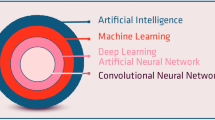Abstract
Purpose of Review
This review describes the current strategies used in the diagnosis and treatment of pulmonary embolism. The non-specific and potentially life-threatening presentations associated with the disease require clinicians to take an individualized approach in deciding the best route to follow for a given patient. Thus, knowledge of different diagnostic modalities and therapeutic interventions available can assist clinicians in deciding how to care for individual patients.
Recent Findings
Comparing data on the safety and effectiveness of different treatment interventions suggests the use of catheter-based therapeutic strategies will continue to increase in the future. With advancing applications in artificial intelligence, deep-learning models have been proposed for diagnostic imaging techniques and risk stratification. Though most of these systems are still in developmental stages, the potential benefit it offers is demonstrated in several studies.
Summary
Available data and literature surrounding the techniques implemented in pulmonary embolism diagnosis and treatment are important resources for the direction clinicians take in disease approach and management. More advanced techniques utilized in the clinical setting offer potential for improved short- and long-term patient outcomes. Future developments in disease management will likely be aimed towards creating more efficient and effective diagnostic systems as well as minimizing the risks associated with current interventions.

Similar content being viewed by others
References
Papers of particular interest, published recently, have been highlighted as:
• Of importance
•• Of major importance
Duffett L, Castellucci LA, Forgie MA. Pulmonary embolism: update on management and controversies. The BMJ. 2020;370:2177.
• Ortel TL, Neumann I, Ageno W, et al. American society Society of hematology Hematology 2020 guidelines for management of venous thromboembolism: Treatment treatment of deep vein thrombosis and pulmonary embolism. Blood Adv. 2020;4:4693–4738. The American Society of Hematology guidelines for the management and treatment of venous thromboembolism.
Sergent SR, Galuska M, Ashurst J. Management of deep vein thrombosis in the emergency department. Emerg Med Pract. 2020;22:1–24.
•• Konstantinides Sv, Meyer G, Bueno H, et al. 2019 ESC guidelines for the diagnosis and management of acute pulmonary embolism developed in collaboration with the European Respiratory Society (ERS). Eur Heart J. 2020;41:543-603. Evidence-based guidelines and recommendations established by the European Society of Cardiology aid in clinical decision making for the diagnosis and treatment of acute pulmonary embolism. Its impact on medical practice provides an accurate representation of the current techniques implemented in acute pulmonary embolism diagnosis/management.
• Giri J, Sista AK, Weinberg I, et al. Interventional therapies for acute pulmonary embolism: current status and principles for the development of novel evidence. Circulation. 2019;140:E774-E801. The American Heart Association’s statements and guidelines regarding available endovascular treatment strategies for acute pulmonary embolism and considerations for future evidence development for new devices.
Petritsch B, Pannenbecker P, Weng AM, Veldhoen S, Grunz JP, Bley TA, Kosmala A. Comparison of dual- and single-source dual-energy CT for diagnosis of acute pulmonary artery embolism. RoFo Fortschritte auf dem Gebiet der Rontgenstrahlen und der Bildgebenden Verfahren. 2020. https://doi.org/10.1055/a-1245-0035.
Bajc M, Schümichen C, Grüning T, et al. EANM guideline for ventilation/perfusion single-photon emission computed tomography (SPECT) for diagnosis of pulmonary embolism and beyond. Eur J Nucl Med Mol Imaging. 2019;46:2429–51.
Francis S, Kabrhel C. Current Controversies in Caring for the Critically Ill Pulmonary Embolism Patient. Emerg Med Clin North Am. 2020;38:931–44.
Kaya F, Ufuk F, Karabulut N. Diagnostic performance of contrast-enhanced and unenhanced combined pulmonary artery MRI and magnetic resonance venography techniques in the diagnosis of venous thromboembolism. Br J Radiol. 2019;92:20180695.
Meyer G, Vicaut E, Danays T, et al. Fibrinolysis for patients with intermediate-risk pulmonary embolism. N Engl J Med. 2014;370:1402–11.
Furfaro D, Stephens RS, Streiff MB, Brower R. Catheter-directed thrombolysis for intermediate-risk pulmonary embolism. Ann Am Thorac Soc. 2018;15:134–44.
• Kuo WT, Banerjee A, Kim PS, et al. Pulmonary embolism response to fragmentation, embolectomy, and catheter thrombolysis (PERFECT): initial results from a prospective multicenter registry. In: Chest. Am College of Chest Phys. 2015;667–673. The PERFECT study analyzes the outcomes observed in pulmonary embolism patients undergoing catheter-directed thrombolysis.
Bloomer TL, El-Hayek GE, McDaniel MC, Sandvall BC, Liberman HA, Devireddy CM, Kumar G, Fong PP, Jaber WA. Safety of catheter-directed thrombolysis for massive and submassive pulmonary embolism: results of a multicenter registry and meta-analysis. Catheter Cardiovasc Interv. 2017;89:754–60.
Lakhter V, Zack CJ, Brailovsky Y, et al. Predictors of intracranial hemorrhage in patients treated with catheter-directed thrombolysis for deep vein thrombosis. J Vascular Surg: Venous and Lymphatic Disorders. 2020. https://doi.org/10.1016/j.jvsv.2020.08.029
Geller BJ, Adusumalli S, Pugliese SC, et al. Outcomes of catheter-directed versus systemic thrombolysis for the treatment of pulmonary embolism: a real-world analysis of national administrative claims. Vascular Medicine (United Kingdom). 2020;25:334–40.
• Piazza G, Hohlfelder B, Jaff MR, et al. A prospective, single-arm, multicenter trial of ultrasound-facilitated, catheter-directed, low-dose fibrinolysis for acute massive and submassive pulmonary embolism The SEATTLE II study. 2015. The SEATTLE II trial investigates acute pulmonary embolism treatment outcomes associated with a catheter-based system utilizing both thrombolytic and ultrasonic mechanisms.
Chopard R, Ecarnot F, Meneveau N. Catheter-directed therapy for acute pulmonary embolism: navigating gaps in the evidence. European Heart Journal, Supplement. 2019;21:I23–30.
•• Kahn SR, Julian JA, Kearon C, et al. Quality of life after pharmacomechanical catheter-directed thrombolysis for proximal deep venous thrombosis. In: Journal of Vascular Surgery: Venous and Lymphatic Disorders. Elsevier Inc. 2020;8–23.e18. The ATTRACT trial assesses quality of life in patients with deep venous thrombosis undergoing pharmacomechanical catheter-directed thrombolysis.
• Kucher N, Boekstegers P, Müller OJ, et al. Randomized, controlled trial of ultrasound-assisted catheter-directed thrombolysis for acute intermediate-risk pulmonary embolism. Circulation. 2014;129:479-486. The ULTIMA trial compares ultrasound-assisted catheter-guided thrombolysis with anticoagulation to anticoagulation alone in the treatment of acute pulmonary embolism.
•• Piazza G, Sterling KM, Tapson VF, Ouriel K, Sharp ASP, Liu PY, Goldhaber SZ (2020) One-year echocardiographic, functional, and quality of life outcomes after ultrasound-facilitated catheter-based fibrinolysis for pulmonary embolism. Circulation: Cardiovascular Interventions. https://doi.org/10.1161/CIRCINTERVENTIONS.120.009012. The OPTALYSE-PE trial investigates both short- and long-term outcomes associated with various fibrinolysis dosing regimens delivered via ultrasound-assisted catheter-based therapies for acute pulmonary embolism.
Setacci C, Benevento D, de Donato G, Galzerano G, Bracale UM, Setacci F, Palasciano G. Acute deep vein thrombosis and pulmonary embolism: is the thromboaspiration device an appropriate choice?. Translational medicine @ UniSa. 2020;21:38–46.
• Tice C, Seigerman M, Fiorilli P, Pugliese SC, Khandhar S, Giri J, Kobayashi T. Management of acute pulmonary embolism. Curr Cardiovasc Risk Rep. 2020. https://doi.org/10.1007/s12170-020-00659-z. Discusses the current interventional strategies for acute pulmonary embolism.
Leung DA, Blitz LR, Nelson T, Amin A, Soukas PA, Nanjundappa A, Garcia MJ, Lookstein R, Simoni EJ. Rheolytic pharmacomechanical thrombectomy for the management of acute limb ischemia: results from the PEARL registry. J Endovasc Ther. 2015;22:546–57.
•• Tu T, Toma C, Tapson VF, et al. A prospective, single-arm, multicenter trial of catheter-directed mechanical thrombectomy for intermediate-risk acute pulmonary embolism: the FLARE study. JACC: Cardiovascular Interventions. 2019;12:859–869. The FLARE study evaluates the safety and efficacy outcomes associated with the FlowTriever, a percutaneous mechanical thrombectomy system, in acute pulmonary embolism treatment.
Kearon C, Akl EA, Ornelas J, et al. Antithrombotic therapy for VTE Disease CHEST Guideline and Expert Panel Report. 2016. https://doi.org/10.1016/j.chest.2015.11.026.
• Sista AK, Horowitz JM, Tapson VF, et al. Indigo aspiration system for treatment of pulmonary embolism JACC Cardiovasc Interv. 2021. https://doi.org/10.1016/j.jcin.2020.09.053. The EXTRACT-PE trial assesses aspiration thrombectomy interventions for the treatment of acute pulmonary embolism.
Lenfant M, Chevallier O, Comby P-O, Secco G, Haioun K, Ricolfi F, Lemogne B, Loffroy R. Deep learning versus iterative reconstruction for CT pulmonary angiography in the emergency setting: improved image quality and reduced radiation dose. Diagnostics. 2020;10:558.
• Huang SC, Kothari T, Banerjee I, et al. PENet—a scalable deep-learning model for automated diagnosis of pulmonary embolism using volumetric CT imaging. npj Digital Medicine 2020;3:1–9. The deep-learning model PENet suggests the growing application of artificial intelligence in clinical areas.
• Banerjee I, Sofela M, Yang J, et al. Development and performance of the pulmonary embolism result forecast model (PERFORM) for computed tomography clinical decision support JAMA Netw Open. 2019. https://doi.org/10.1001/jamanetworkopen.2019.8719. PERFORM’s machine-learning technology is discussed in relation to future applications with respect to pulmonary embolism.
Author information
Authors and Affiliations
Corresponding author
Ethics declarations
Conflict of Interest
Sydney K Suede declares that she has no conflict of interest. Robert R Ehrman, MD, MS, declares that he has no conflict of interest.
Human and Animal Rights Informed Consent
This article does not contain any studies with human or animal subjects performed by any of the authors.
Additional information
Publisher's Note
Springer Nature remains neutral with regard to jurisdictional claims in published maps and institutional affiliations.
This article is part of the Topical Collection on Technology in Medicine
Rights and permissions
About this article
Cite this article
Suede, S.K., Ehrman, R.R. Modern Technology for the Diagnosis and Treatment of Pulmonary Embolism. Curr Emerg Hosp Med Rep 9, 105–115 (2021). https://doi.org/10.1007/s40138-021-00239-4
Accepted:
Published:
Issue Date:
DOI: https://doi.org/10.1007/s40138-021-00239-4




